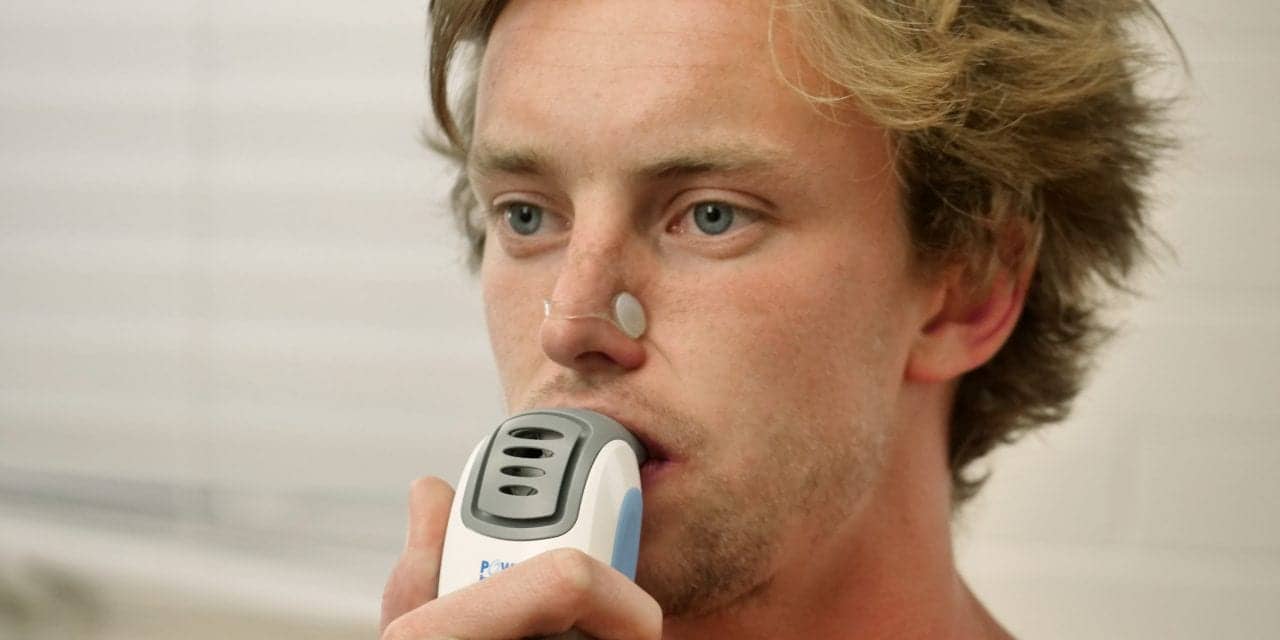With a new grant from the National Institute on Aging, University of Colorado Boulder researchers have launched a clinical trial to learn more about the exercise known as Inspiratory Muscle Strength Training (IMST).
“It’s like strength training, except it’s for the muscles you use to inhale,” says Daniel Craighead, a postdoctoral researcher in the Integrative Physiology department in the College of Arts and Sciences, in a release.
“It’s only 30 breaths. It takes people about 5 minutes, and so far it looks like it is very beneficial to lower blood pressure and possibly boost cognitive and physical performance.”
Developed in the 1980s as a means to wean critically ill people off ventilators, IMST involves breathing in vigorously through a hand-held device—an inspiratory muscle trainer—which provides resistance. Imagine sucking hard through a straw that sucks back.
During early use in patients with lung diseases, patients performed a 30-minute, low-resistance regimen daily to boost their lung capacity.
But in 2016, University of Arizona researchers published results from a trial to see if just 30 inhalations per day with greater resistance might help sufferers of obstructive sleep apnea, who tend to have weak breathing muscles, rest better.
In addition to more restful sleep and developing a stronger diaphragm and other inspiratory muscles, subjects showed an unexpected side effect after six weeks: Their systolic blood pressure plummeted by 12 millimeters of mercury. That’s about twice as much of a decrease as aerobic exercise can yield and more than many medications deliver.
Professor Doug Seals, director of the Integrative Physiology of Aging Laboratory, notes that systolic blood pressure, which signifies the pressure in your vessels when your heart beats, naturally creeps up as arteries stiffen with age, leading to damage of blood-starved tissues and higher risk of heart attack, cognitive decline, and kidney damage.
While 30 minutes per day of aerobic exercise has clearly been shown to lower blood pressure, only about 5% of adults meet that minimum, government estimates show. Meanwhile, 65% of mid-life adults have high systolic blood pressure.
Photo by Casey A. Cass/University of Colorado


![[Micro]sensing the Future](https://sleepreviewmag.com/wp-content/uploads/2014/05/AirAidSleepSensor-440x264.png)


I am very excited to learn about the progress for this new device. I have a rare disease ,Osteogenesis Imperfecta, that is impacting my bones, lungs, heart, muscles, joints and blood pressure.Aerobic exercises are hard for me since I keep having surgeries to repair my spine, feet, knees and hips that keep fracturing.
If you would like to test someone like me to see if it would benefit others with my disease, pleas e contact me. I live just 30 miles from the University.
Hi there
I am also very keen to know about this device. My dad has been diagnosed couple of years back with a Fibrose and this type of device could be very beneficial.
I will follow up its development very closely but if there is a way to purchase it early on ( even if still being studied ) I would be grateful to be informed.
Regards
Anne Sophie
Could you please provide names of suppliers for the ELECTRONIC NOSE used for detecting SLEEP APNEA in Vancouver ,BC, Canada or just in Canada? It would help us. Thanks!
I would like to purchase a IMST. Are they availavble?
thanks,
Jim siddall, PA-C
Hi Jim – You can find them on amazon, but I suggest reading about the different models at the website first and then go to amazon for pricing. Best wishes… Gary
I am interested in finding out if this treatment would help in treating micro-vascular coronary disorder. I also have sleep apnea.